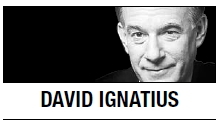TAMPA ― The emblem of the U.S. Special Operations Command pointedly illustrates its mission: It shows the tip of a spear. Now SOCOM is expanding this arsenal to create a global network that can project power even as America’s armies withdraw from the battlefields of the last decade.
Adm. William McRaven, the SOCOM commander, has been developing this ambitious new role at his headquarters at MacDill Air Force Base here. McRaven is among the nation’s most celebrated warriors. He planned the operation that killed Osama bin Laden in May 2011; in his office is a small sculpture tagged “Bull Frog,” honoring him as the longest-serving Navy SEAL in uniform.

McRaven’s plan to create a “global SOF network” was endorsed in February by the Pentagon, which gave McRaven direct control over special forces around the world. The move appears to have support from other top military commanders, even though it would potentially diminish their authority. But there has been little public discussion of the policy, despite its significant changes. The White House appears to like the concept but has not signed off on final details.
The underlying idea is that special forces have proved themselves America’s best weapon against extremists in a turbulent, increasingly borderless world. After the grinding wars in Iraq and Afghanistan, the U.S. won’t be sending big expeditionary armies abroad anytime soon. America’s heavyweight commands, such as CENTCOM in the Middle East and PACOM in the Pacific, will now focus on potential adversary nations such as Iran, China and North Korea.
To fight the small wars. McRaven offers his agile, stealthy and highly lethal network of commandos. Often their missions will involve training and partnering with other nations, rather than shooting. Sometimes, their activities may look like USAID development assistance or CIA political action.
McRaven’s global network would help fill a vacuum in U.S. foreign policy. As America retreats from its costly and unpopular wars, it needs ways to influence a world shaken by what former national security adviser Zbigniew Brzezinski calls the “global political awakening.” The U.S. also needs to get its act together, bureaucratically ― coordinating military services and government agencies the way SOCOM has done with its joint forces
The existing tool kit hasn’t been very effective: USAID is more of a development contractor than an operational agency; the State Department’s Bureau of Conflict and Stabilization Operations is too small to lead even its own department’s efforts, let alone the government’s; the U.S. Institute of Peace likes its status as an independent adviser, rather than an instrument of national power. And the CIA wants to do less covert action, not more.
Enter the Special Operations Forces. The past decade may have shown the limits of conventional military power, but it has also demonstrated the potency of the unconventional SOF arsenal. The most dramatic examples are the secret task forces that killed bin Laden in Pakistan and targeted hundreds of other extremists in night raids in Iraq and Afghanistan.
McRaven’s staff argues that the biggest future impact of special forces may not be in combat but in partnering and networking. An example is the “A-teams” that lived rough with Afghan tribal fighters starting in 2001 and made them partners against the Taliban. The network will draw on SOCOM forces deployed in 78 countries, many teaching war-fighting skills to local special forces. In a pamphlet describing the plan, you see pictures of McRaven’s warriors mentoring elite forces from Thailand, Nigeria, Albania, Colombia, Jordan and a dozen other countries. That’s the network, in embryo.
SOCOM planners say the concept was conceived in Europe in 2007, where McRaven created a NATO center that boosted European special forces in Afghanistan from 340 in 2007 to 2,200 now. Fighting together, they formed what commanders hope will be lasting bonds. As one of the SOCOM slogans has it: “You can’t surge trust.”
The idea of filling the power gap with special forces is appealing, but I come away with this caution: The world is wary of forward-deployed American commandos, no matter how important the mission. A decade ago, a Pentagon plan to spread special forces abroad as “military liaison elements” created a firestorm of protest. McRaven may promise that his network won’t act anywhere without the approval of the U.S. ambassador, but the State Department will still have the jitters, not to mention foreign governments.
A global SOF network will be a powerful tool, but it can’t fill the vacuum by itself. SOF power and soft power aren’t the same thing.
By David Ignatius
David Ignatius’ email address is davidignatius@washpost.com. ― Ed.
(Washington Post Writers Group)








